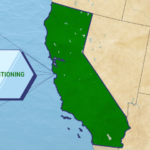Why Have EU Emission Allowances (EUAs) Risen So High, and Where Will They Go Next?
By Eron Bloomgarden, Partner at Climate Finance Partners (CLIFI)

For the past six months, European energy markets have seen unprecedented volatility as well as record-high prices, as concern over the impacts of delays to gas supply through the Nord Stream 2 pipeline has given way to outright fear of the effect of Russia’s invasion of Ukraine.
Carbon prices are no exception, and we have seen prices rise from around €50/tonne (€1=$1.09*) in June 2021 to an all-time high of €98.49 on February 8 this year.
It’s easy to understand why natural gas, power, and coal prices are all higher – after all, Russia is one of the world’s leading producers of all three of these fuels – but why have EU emission allowances (EUAs) risen so high, and where will they go next?
To start with, the role of EUAs is to act as a deterrent against emissions of greenhouse gases. By imposing a cost on carbon dioxide, EUAs impose additional costs on high emitting industries, most particularly the power sector.
Because burning coal emits twice as much CO2 than natural gas per megawatt-hour of power generated, the relative costs of gas and coal are very important. And the evolution of those prices in 2021 shows how gas prices outpaced the rest of the energy complex.

The spike in gas prices meant that the fuel became uncompetitive against coal for power generation, shown in the so-called clean dark spread (the operating margin for coal-fired plants) and clean spark spread (the gas plant margin). These margins both include the cost of carbon as an input.

Of course, these charts display margins at fixed points in time, with known costs. If we turn this calculation on its head, we can solve for the price of carbon that would be required to make gas competitive against coal. As the chart below shows, carbon simply didn’t keep up with the shift in generation economics, and never reached the level it needed to be at, to keep gas at the top of the merit order.
This situation has persisted through to today. EUA prices are essentially in a vacuum, where they are not high enough to force fuel-switching by utilities.
So why are carbon prices where they are now?
Companies that need to buy EUAs to comply with emissions regulations are facing a steadily declining supply of allowances in the coming eight years. The number of EUAs issued into the market each year declines at 2.2% a year from 2021 through 2030, and most analysts believe this already leaves the market short on an annualized basis. Any additional demand comes from the existing surplus supply.
But additional reforms to the EU ETS are now being discussed by the European Commission that would tighten supply even further and remove more of the surplus each year. One option being considered is a one-off re-balancing of supply in order to remove as much of the surplus as possible.
A second alternative involves a steeper cut in supply each year, and lawmakers are also mulling whether to include emissions from maritime transport in the market, bringing additional demand into the EU ETS.
These proposals are all seen as supportive of future EUA prices and served to underpin much of the price rally in the first half of 2021 when prices rose from €32 into the €50s. This fundamental bullishness is what attracted investors to the market in 2021, repeating a theme from 2018 when an earlier set of reforms also triggered a wave of new investment demand that helped prices to more than double.
But it was the rise in gas prices that boosted carbon the most. An extended winter in 2020-21 left gas storage at historic lows, and summertime restocking began to drive prices higher as it became increasingly clear that the Nord Stream 2 pipeline would not start on time.
And as tensions with Russia over the pipeline grew, concerns over filling storage began to outweigh the need to use gas as the lowest carbon power generation fuel.
And while carbon prices tried to keep pace with gas well into the fourth quarter, it eventually became apparent that EUAs would have to rise to unsustainable levels to keep gas in pole position for power. The chart below shows the price of carbon required to force switching from coal to gas at various thermal efficiency plants, compared with the actual price of carbon (in black).

In essence, carbon “gave up” trying to keep gas at the top of the merit order for power generation.
At the start of 2022, EUAs were still gaining, bolstered by a bullish policy outlook and not yet hit by the risk-off attitude that characterised the start of the conflict in Ukraine.
The start of the invasion of Ukraine saw energy prices spike on concerns over supply, and forced many participants to liquidate their EUA holdings, either in order to maintain futures positions in other more strategic markets, or simply to invest in other more volatile commodities.
Commitment of Traders data from the ICE Index and EEX exchanges showed that investment funds’ total long positions peaked at more than 50 million EUAs in October 2021, but have fallen steadily ever since and now stand at just over 18 million allowances.
Clearly, investors still see the potential for EUA prices to decline or, at best, stabilize at current levels as long as the conflict in Ukraine continues. And Europe’s response to the economic impact of the war is also fluid, as the Commission and member states continue to discuss ways to shield consumers from high energy costs.
Yet carbon has rallied from its initial losses in the early days of the invasion. EUA prices have recovered from a low of €55 to more than €80 in just three weeks.
The evolution of fuel prices has meant that European utilities are burning more coal than at any point in the last 18 months, and efforts to reduce the bloc’s reliance on Russian gas have also led some countries to consider postponing the phase-out of coal plants.
These coal plant extensions essentially “lock in” additional coal-burning and therefore bolster demand for EUAs into future years. If current regulatory proposals to tighten EUA supply are approved, the market may tighten considerably from 2025.
*conversion as of 4/13/2022
r-ks-sei


















